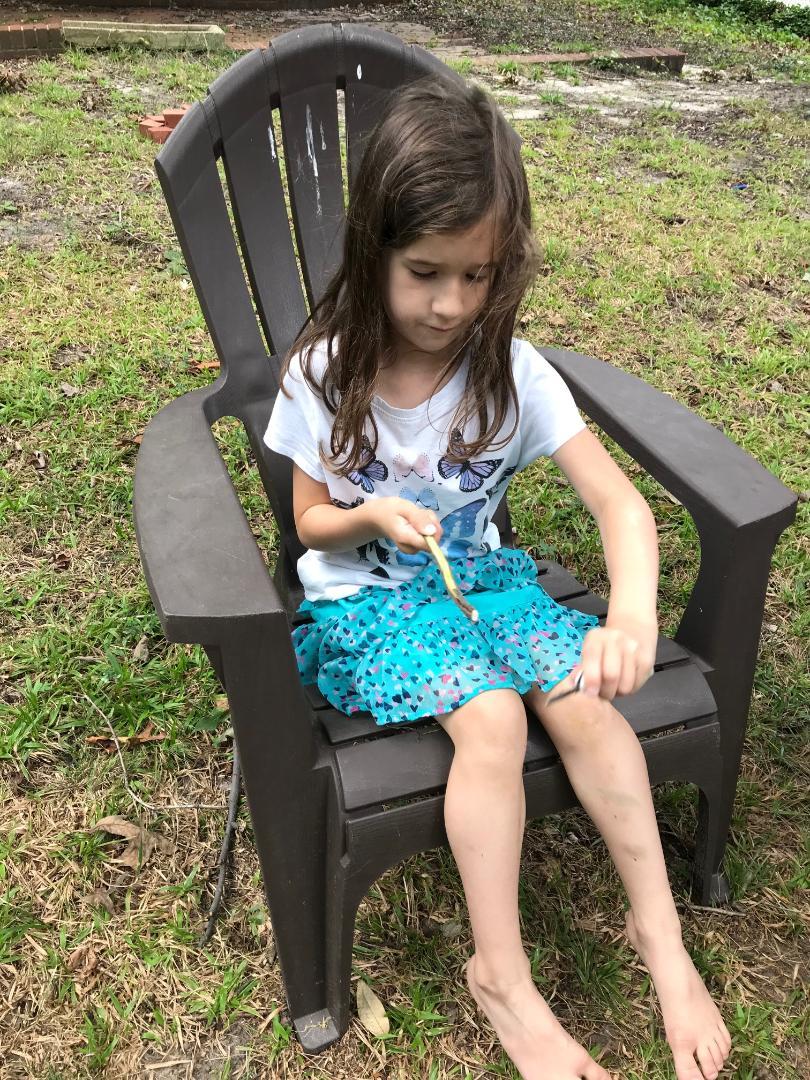 Learning begins at the very point life begins and does not stop until life ends. I have seen that demonstrated in my children and in the people I have known who are now gone. You can either nurture learning or let it grow on its own but either way, it’s going to happen. In the DCI home, we like a lot of forms of learning – reading, drawing, exploring, and yes, even electronics – movies, TV and YouTube! But one of the most fun types of learning to see is when we learn from DIY experiences that we teach each other. Recently our daughter began the art of whittling wood. She is just at the very basic beginning steps of whittling. Basically, we clip a small branch from a tree, she whittles off the bark and then decorates it with paint. Here was the conversation I heard in the car about these first experiences she had with learning to whittle:
Learning begins at the very point life begins and does not stop until life ends. I have seen that demonstrated in my children and in the people I have known who are now gone. You can either nurture learning or let it grow on its own but either way, it’s going to happen. In the DCI home, we like a lot of forms of learning – reading, drawing, exploring, and yes, even electronics – movies, TV and YouTube! But one of the most fun types of learning to see is when we learn from DIY experiences that we teach each other. Recently our daughter began the art of whittling wood. She is just at the very basic beginning steps of whittling. Basically, we clip a small branch from a tree, she whittles off the bark and then decorates it with paint. Here was the conversation I heard in the car about these first experiences she had with learning to whittle:
Hannah – “I like whittling. It’s fun and I can do it now because Stephen taught me.”
Stephen – “Well, Dad taught me first and then I taught you!”
This simple exchange between my children made me smile. We could have “YouTubed” it or checked a book out from the library on whittling and that would have been fine, but the fact that conversations between parent and child and then child to child were had to build a skill is what I found awesome. So many skills were practiced in those moments too besides whittling – listening, comprehension, patience and practice! As they grow and the skills they are learning grow in difficulty, wouldn’t it be great if this learning from one another they are experiencing now helps them teach each other later too? I really believe it will.
Here’s some tips on helping a child with his/her next DIY experience in learning:
- Explain steps in language they can understand and keep it simple. Kids, much like adults in some cases, will lose attention when instructions are lengthy and complicated.
- Show them an example of the steps you are explaining. Many people, children are no different, are visual learners. They do best when they can see an example of what is being explained.
- Ask them to explain the steps back to you. This helps the auditory learners, people who learn best by hearing, but it also will show you if the child truly understands what you have explained or if you need to go back over the step again.
- Be patient and refrain from, “Oh just let me do it!” That phrase alone will discourage a child and lead them to think they can’t do a skill before they have even tried well enough.
- Celebrate with them when they are successful and encourage them when they are struggling. No step of success is too small to mention and every struggle is an opportunity to reassure them, “You can do this!”

